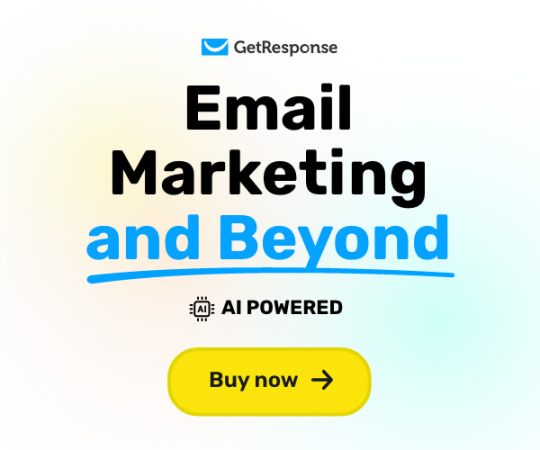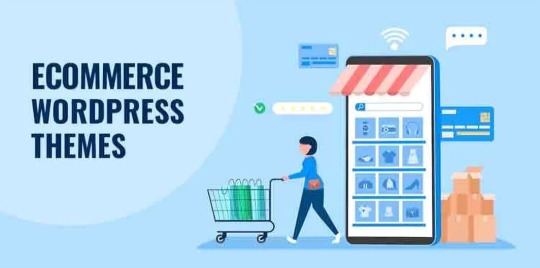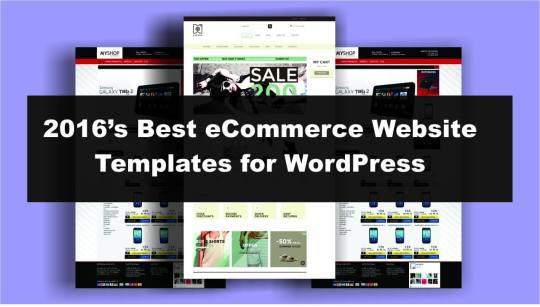#best ecommerce theme for wordpress
Explore tagged Tumblr posts
Text
Kalles - Clean, Versatile, Responsive Shopify Theme with RTL Support
In the world of e-commerce, having an attractive and functional online store is essential for success. Shopify, a popular e-commerce platform, offers a wide range of themes to help businesses create visually appealing and user-friendly online stores. One such theme is Kalles, a clean, versatile, and responsive Shopify theme with RTL (Right-to-Left) support. In this article, we will explore the features and benefits of Kalles, along with its RTL support, to understand why it is a great choice for businesses looking to cater to a global audience.
Section 1: An Overview of Kalles Theme
Kalles is a premium Shopify theme designed to meet the diverse needs of online businesses. With its clean and modern design, it offers a professional and visually appealing interface that enhances the overall user experience. The theme's versatility allows it to be used for various industries, including fashion, electronics, furniture, and more.
Section 2: Responsive Design for Seamless Mobile Experience
In today's mobile-centric world, having a responsive website is crucial. Kalles ensures a seamless user experience across different devices and screen sizes. Its responsive design adapts to the user's device, whether it's a desktop computer, tablet, or smartphone, providing a consistent and optimized browsing experience.
#e-commerce theme#wordpress e-commerce theme#best ecommerce theme for wordpress#free e commerce theme#laravel e-commerce theme#shopify e commerce theme#odoo e-commerce theme#drupal e-commerce theme#jewellery e commerce theme#e-commerce themeforest#e-commerce theme free bootstrap#popular e-commerce theme#best ecommerce themes wordpress#wordpress ecommerce themes#best ecommerce theme for elementor#a reference to e-commerce#the e-commerce strategy that blends#ecommerce theme bootstrap#ecommerce theme bootstrap free#ecommerce theme bootstrap 4#e-commerce brief template#best free ecommerce wordpress theme#e commerce custom theme#e commerce css template#wordpress ecommerce theme for clothing#ecommerce divi child theme#ecommerce theme woocommerce#Kalles
2 notes
·
View notes
Text
#best business theme wordpress#consulting business wordpress theme#business#marketing#management#paid wordpress themes#premium wordpress themes#wordpress premium themes#premium wordpress theme#education & online course wordpress theme#app landing wordpress theme#ecommerce#wordpress plugins#online learning wordpress theme#education wordpress theme#entrepreneur#branding#best wordpress theme for medical website#website#webdesign#webdevelopment#website speed optimization#development#software#php
3 notes
·
View notes
Text
GetResponse review: top pros and cons you should know about in 2024

GetResponse Homepa
In today’s digital age, having the right email marketing strategy is essential for any business. Without it, you risk falling behind your competitors. But with so many platforms available, how do you choose the one that fits your needs?
As an entrepreneur or business leader, you likely know the frustration of finding the right solution. You want an email marketing tool that’s both user-friendly and packed with features to help grow your business. The problem? Many platforms are either too basic and lack essential features, or they’re so complex that you need advanced technical skills to navigate them.
Now, imagine a tool that combines the ease of drag-and-drop functionality with a robust set of features that could replace multiple expensive solutions. A platform that not only manages your email campaigns but also automates workflows and even hosts webinars.
That’s where GetResponse comes in. It’s a marketing platform designed to offer the capabilities of a full suite of tools in one place. But does it really live up to its promises? Let’s take a closer look.
Why I Chose GetResponse: My Email Marketing Journey
Since I started my online journey in 2012, I’ve used nearly a dozen different email marketing platforms. With a tight budget, I often found myself switching from one provider to another, always trying to keep costs low.
Each time, I had to export my mailing list and move on.
Like many, I searched for free email marketing services, hoping to find the right tools to grow my subscriber base quickly. However, I soon realized that free services rarely provide the essential features needed for serious growth.
That’s the reality of free email marketing platforms…
They typically offer limited functionality and lack the advanced tools necessary to engage and grow your audience effectively. If you’re serious about building a successful online business, free tools can only take you so far. They’re useful when you’re just starting, but investing in premium services and features is key to scaling and achieving significant growth.
Over the years, I’ve tried several email marketing platforms, including:
MailChimp
Constant Contact
Sendinblue
MailerLite
Mad Mimi
GetResponse
Benchmark Email
EmailOctopus
ConvertKit
Note: My evaluations are based on the free plans or trial periods offered by these services.
In my experience, GetResponse stands out as the most appealing option. It’s affordable and offers a comprehensive set of tools that have helped me build, manage, and grow my online business more effectively.
So, let’s dive in…
What is GetResponse?

Turn Knowledge into Revenue
GetResponse is a comprehensive marketing automation platform with over two decades of experience, offering a wide range of tools and advanced features. These include website creation, email marketing, conversion funnel setup and monitoring, and live chat functionality. Trusted by major companies like IKEA, Carrefour, and CD Projekt, GetResponse empowers businesses to enhance their visibility and expand their audience through targeted email campaigns.
The platform provides professional tools for creating newsletters, SMS marketing, and commercial emails, all equipped with audience segmentation to ensure effective targeting. Additionally, it offers campaign optimization to improve email delivery rates, making it an ideal choice for building a strong marketing strategy. With features like A/B testing, in-depth analytics, and responsive customer support, GetResponse ensures that the right message reaches the right audience at the right time, maximizing return on investment.
Key Features of GetResponse:
User-Friendly Interface: GetResponse’s intuitive drag-and-drop email editor allows users to create visually appealing emails with ease — no coding skills required. Whether you’re a beginner or an experienced marketer, designing professional-quality emails is quick and straightforward.
Powerful Automation: With GetResponse’s advanced automation tools, you can effortlessly set up workflows that nurture leads and engage your audience. From simple welcome emails to complex sales funnels, GetResponse simplifies your marketing automation.
Robust Analytics: Monitor the performance of your campaigns with GetResponse’s detailed analytics. Track metrics like open rates, click-through rates, and conversions to evaluate your success and make data-driven decisions.
Landing Pages & Webinars: In addition to email marketing, GetResponse provides tools for building landing pages and hosting webinars, helping you grow your email list and engage with your audience in innovative ways.
24/7 Customer Support: GetResponse offers around-the-clock customer support, ensuring you have access to knowledgeable and responsive assistance whenever you need it.

Turn Knowledge into Revenue
Key Highlights of GetResponse’s Content Monetization Platform
GetResponse’s Content Monetization Platform is designed to empower users to effortlessly create and sell digital products such as online courses, quizzes, paid newsletters, and memberships. It provides an all-in-one solution that covers everything from content creation to audience management, making it ideal for those aiming to grow their brand while engaging their audience with premium content.
Standout Features:
Online Course Creator At the core of this platform is the Online Course Creator, which simplifies the process of developing and launching online courses. Whether you’re an expert or a business aiming to educate your audience, this tool makes it easy to design and structure courses.
Drag-and-Drop Editor: The intuitive drag-and-drop editor lets users build courses with no technical skills required. Multimedia elements like videos, quizzes, PDFs, and images can be easily added to enrich the learning experience.
Customizable Templates: Choose from a range of professional templates that can be tailored to match your branding, ensuring consistency with your business.
Integrated Video Hosting: The platform includes built-in video hosting, eliminating the need for third-party services like YouTube or Vimeo. This ensures your content stays secure and exclusive to paying customers.
Quizzes and Assessments Quizzes are an excellent way to boost engagement and evaluate how well your audience understands the material. GetResponse allows you to integrate quizzes and assessments directly into your courses.
Automated Grading: Automatically grade quizzes and provide students with instant feedback.
Customizable Question Types: Include multiple-choice questions, fill-in-the-blank exercises, or long-form answers for more in-depth assessments.
Ecommerce and Payment Gateways
Selling digital products is made simple with GetResponse’s ecommerce features. The platform supports various payment gateways, such as PayPal and Stripe, so users can process payments directly through their website.
Paid Newsletters For those who prefer delivering content via email, GetResponse offers paid newsletter functionality. This is ideal for creators who want to monetize their expertise by sending exclusive content directly to subscribers’ inboxes.
Subscription Models: Set up monthly or yearly subscriptions, providing a consistent revenue stream.
Automation: GetResponse’s automation ensures newsletters are delivered on time and can be personalized based on subscriber behavior and preferences.
Webinars and Live Events Webinars are an integral part of modern content marketing, and GetResponse allows you to create and host them directly through the platform. This feature helps you engage with your audience in real time.
Interactive Features: Include polls, Q&A sessions, and live chats to make your webinars more engaging.
Monetized Webinars: Charge audiences for access to live events, creating yet another revenue stream.
Audience Management and CRM Integration Effective audience management is key to successful content monetization. GetResponse includes CRM tools to help track leads, manage customer data, and optimize communications.
Advanced Segmentation: Organize your audience into segments based on behavior, interests, and other factors, allowing for more targeted content and marketing efforts.
Automation: Use marketing automation to send personalized emails, follow-ups, and course recommendations based on user activity.
Analytics and Reporting Understanding how your content performs is crucial for making informed decisions. GetResponse offers robust analytics and reporting tools to track metrics like course completion rates and revenue.
Customizable Reports: Generate reports on the metrics that matter most, such as student engagement, quiz results, and sales.
A/B Testing: Test different strategies using A/B testing to determine which resonates best with your audience.
Automated Payment Processing: Once a purchase is made, payments are processed automatically, and access to the purchased content is granted.
Memberships and Subscriptions: Develop membership tiers or subscription programs to offer ongoing value, such as exclusive courses or paid newsletters.

Turn Knowledge into Revenue
Benefits of Using GetResponse’s Content Monetization Platform
All-in-One Solution GetResponse’s platform integrates all aspects of content creation, audience management, and marketing into a single platform, reducing the need for multiple tools and subscriptions.
Scalability Whether you’re starting with one course or planning an entire digital academy, GetResponse scales with your business. You can begin with basic tools and expand as your needs grow.
Ease of Use The drag-and-drop editor, customizable templates, and built-in automation make the platform accessible to users of all technical skill levels, opening up content monetization to a wider audience.
Seamless Integration GetResponse integrates effortlessly with other platforms and tools, including ecommerce solutions like Shopify and WooCommerce, as well as payment gateways like PayPal and Stripe.
Affordable Pricing GetResponse offers competitive pricing with options for businesses of all sizes. Users can start with a free plan and upgrade to paid plans as their needs increase, ensuring affordability and value at every stage of growth.

Turn Knowledge into Revenue
Updated Pricing for GetResponse’s Content Monetization Platform
GetResponse provides a range of pricing options tailored to meet the needs of various business types and stages of growth, from small startups to large enterprises.
Free Plan The Free Plan gives users access to essential email marketing tools, allowing them to test the platform at no cost. It includes the ability to create one landing page and send up to 2,500 newsletters per month.
Email Marketing Plan Cost: Starts at $19/month, or $15.60/month when billed annually. Features: Unlimited email sends, an AI-powered email generator, and list management capabilities. Ideal For: Small businesses or individuals new to email marketing.
Marketing Automation Plan Cost: Starts at $59/month, or $48.40/month when billed annually. Features: Builds on the Email Marketing Plan by adding automation workflows, event-based triggers, and webinar capabilities. Ideal For: Growing businesses looking to enhance their marketing through automation.
Ecommerce Marketing Plan Cost: Starts at $119/month, or $97.60/month when billed annually. Features: Offers ecommerce integrations, abandoned cart recovery tools, and product recommendations. Ideal For: Ecommerce businesses aiming to optimize their sales funnel.
GetResponse MAX Cost: Starting at $1,099/month. Features: Designed for large enterprises, this plan includes premium support, SMS marketing, transactional emails, and a dedicated account manager. Ideal For: Large businesses with advanced marketing needs.
Pros and Cons
Pros:
User-Friendly Interface: Easy to navigate for users of all skill levels.
Comprehensive Features: Supports every aspect of email marketing, automation, and webinars.
Powerful Automation: Advanced workflows to streamline tasks and improve efficiency.
Integrated Webinars: Built-in webinar functionality eliminates the need for third-party software.
Scalable Plans: Flexible pricing options tailored to businesses of different sizes and needs.
Cons:
Learning Curve for Advanced Features: Some of the more advanced tools may require additional time to master.
Pricing Tiers: Certain features are only available in higher-tier plans, which could be a limitation for smaller businesses on a tight budget.
Customer Support: Some users report slow response times from customer support

Turn Knowledge into Revenue
Verdict:
GetResponse offers a wealth of powerful features during the trial period, allowing you to create a lasting impression that builds customer trust and encourages repeat business. Even after the trial, its diverse range of tools — such as forms, popups, website builders, autoresponders, chat boxes, and e-commerce solutions — empower you to elevate your customer engagement and management.
This email marketing platform is designed to support marketers at all stages, offering tools that cater to businesses of varying sizes and needs. Whether you’re a solo entrepreneur or part of a larger team, GetResponse provides the functionality required to effectively connect with and engage your audience.
Affiliate Disclaimer: If you make a purchase using my links in the description, then I might make a commission (at no extra cost to you, of course).
#WooCommerceTips#woocommerce#Best WooCommerce Themes#ecommerce#WordPress#WooCommerceSEO#WebDesign#OnlineBusiness
1 note
·
View note
Text
Best Ecommerce WordPress Themes of 2024

Want 2024's best WordPress eCommerce themes. Check our list of Ecommerce WordPress themes. Download eCommerce WordPress themes with demo content. Try it Today!
#Ecommerce WordPress themes#WordPress ECommerce Themes#Best ecommerce wordpress themes#Ecommerce wordpress themes download
0 notes
Text
Best Free WordPress WooCommerce Themes 2018 – eCommerce
Best Free WordPress WooCommerce Themes 2018 – eCommerce
ShopIsle ShopIsle is the perfect free theme designed for your WooCommerce shop based on bootstrap. Due to its flexibility ShopIsle can also be used for a one page business site, it has a fullscreen image, parallax effect, it provides a responsive blog section, is eCommerce ready, WPML, Photo Gallery Grid,Contact Form 7,Meta Slider, SiteOrigin Page Builder, JetPack compatible and SEO friendly. It…

View On WordPress
#best ecommerce wordpress theme#best free woocommerce themes#best free wordpress themes#best woocommerce theme#best woocommerce themes#best wordpress themes#best wordpress woocommerce themes#free woocommerce themes#free wordpress themes#top 10 woocommerce themes#woocommerce#woocommerce theme#woocommerce themes#woocommerce themes in wordpress#wordpress#wordpress ecommerce themes#wordpress themes#wordpress woocommerce themes
0 notes
Text
Avada The Best and Best Selling WordPress Theme of All Time

Avada is the best and number one best selling WordPress template on the market ever created. This theme offers a very complete range of features to create a professional website. supports dynamic and mobile-friendly content, ensuring a responsive website on all devices, from mobile to desktop. Has all performance optimization tools like intuitive drag & drop visual builder, Layout Builder, Header Builder, Footer Builder, Form Builder, eCommerce Builder, WooCommerce Integration, Setup Wizard and more.
Avada has been operating for over 11 years. More than 950,000 startups, professional marketers, agencies, businesspeople and creators have trusted Avada for their total web design freedom. A long history has proven that Avada is indeed a multipurpose WordPress theme, the most versatile and easy to use.
With years of improvements and feedback from users, Avada has become the best at giving you the tools to realize your creative imagination in managing your website efficiently and quickly. You don't even need coding knowledge to use it.
For more complete information and discussion. please click here >>
#website#website design#wordpress#hosting#webhosting#bloggers#blogging#blog#ecommerce#woocommerce#template#ui ux design
3 notes
·
View notes
Text
2 BEST WORDPRESS ECOMMERCE PLUGINS FOR YOUR STORE

Thousands of new ecommerce businesses are launched every year, on different platforms. WordPress is a major stack holder and we are going to list down a few most popular plugins for wordpress to turn it into a full-featured eCommerce store. As we explored the realm of WordPress ecommerce plugins, we aimed to distinguish the unique qualities that set each of these plugins apart from one another. While some plugins offer a comprehensive range of features suitable for diverse needs, others excel in providing a simplistic and clutter-free approach to creating online stores.
To discover which plugins best align with your needs, continue reading as we unveil the top WordPress ecommerce plugins currently available in the market.
1. WooCommerce
WooCommerce stands as the most renowned eCommerce extension for WordPress. It has gained immense popularity for several reasons. It offers an easy user interface, a wide range of themes support, and a growing list of WooCommerce extensions, allowing us to build unique and visually appealing online experiences.
*WooCommerce is eventually acquired by Automattic, which is the organization that operates WordPress.
Here are the key benefits of using WooCommerce:
It is secure
It is easy to setup and customize
It supports extensions
You can sell physical as well as digital products
2. Easy Digital Downloads (EDD)
As per their website EDD claims more than 50,000 businesses use Easy Digital Downloads plugin. EDD is a reliable eCommerce WordPress plugin that powers online stores all over the world. It is modular and also supports themes. It is quite popular when it comes to selling digital products using WordPress. Sandhills Development is the company that manages EDD.
Here are the key benefits of using Easy Digital Downloads WordPress plugin:
It is secure
It supports extensions
It is scalable
Perfect for selling digital products
Download logs like download dates & times, IP address, and attached payment record
After conducting an in-depth analysis of these WordPress ecommerce plugins, we are delighted to offer personalized recommendations based on your specific requirements. If you want to sell mostly digital products, Easy Digital Downloads is likely your best option. If you are looking to sell physical products then no doubt WooCommerce is your best bet. The main difference is the minimum shipping options we get with EDD.
#woocommerce developer#woocommerce development#Woocommerce Developer India#woocommerce development company#hire woocommerce developer#hire woocommerce developers
2 notes
·
View notes
Text
★·.·´¯·.·★ Website Tips & Tricks ★·.·´¯·.·★
Top 10 best eCommerce WordPress themes ever
You’re looking at a carefully handpicked list of the best eCommerce WordPress themes for selling anything.
WooCommerce powers all themes to build a mobile-friendly eCommerce website with ease. They are also highly customizable for you to improve your branding regulations. (Tweak them to the last detail.)
We included all mobile-friendly themes, making it the only list you will ever need!
❓ NEED HELP? CONTACT US NOW: 🚹 LinkedIn Message
Sell fashion, furniture, apparel, technology, home improvements, watches, jewelry, and more – it’s all possible.
Creating an online store happens way easier and quicker than you think – without needing coding and design skills.
Let’s have a look at the best WordPress themes for eCommerce.
#webdesigner#webdeveloper#marketing#website#websitetips#advertising#wordpress#websites#DigitalMarketing#websitemarketing#websitetipstricks#woocommerce#ecommerce#onlinestore#business#video#help#localadz
3 notes
·
View notes
Text
How to Turn Your Online Business Dreams into Reality


Introduction: The Digital Frontier of Entrepreneurship Selecting a Niche and Business Model: The Foundation of Success Building Your Online Platform and Brand: Your Digital Headquarters Creating High-Demand Products and Services: Delivering Value to Your Audience Implementing Effective Marketing Strategies: Attracting Targeted Traffic Diversifying Revenue Streams for Maximum Profits: Building Financial Stability Optimizing for Maximum Profitability Long-Term: Building a Sustainable Business Conclusion: Turning Dreams into Reality True successful story
Introduction: The Digital Frontier of Entrepreneurship
In today's digital age, the rise of the internet and technology has revolutionized the way we do business. It has opened a world of opportunities for entrepreneurs to start and run their own businesses online. Online businesses offer flexibility, scalability, and the potential for global reach. This comprehensive guide will provide you with a step-by-step framework for building a profitable online business from the ground up. Whether you want to start a side business or build a full-time online empire, follow this ultimate guide to turn your idea into a thriving, sustainable online business. With focus, grit, and commitment to continuous improvement, you can build the profitable online business of your dreams.
Selecting a Niche and Business Model: The Foundation of Success
The foundation of every successful online business is choosing a profitable, in-demand niche and a business model tailored to your goals. Select a niche you're passionate about; this will make creating content a breeze. Conduct thorough keyword research to assess search volume and demand. Join relevant online communities to connect with your audience and understand their needs. Evaluate direct competitors in the niche and aim for less saturated niches or unique angles. Consider affiliate marketing potential, as some niches offer higher commissions. Assess opportunities to create multiple products and monetize in diverse ways. Examples of popular online business niches include health, fitness, personal finance, pet care, tech, travel, content marketing, home design, spirituality, language learning, and more. Choose a business model that complements your niche and provides multiple income stream opportunities. Many successful online businesses incorporate 3-4 monetization models. Some of the best online business models to consider include: 1. Blogging: Make money with display ads, affiliates, and branded products. 2. Online Courses: Sell your knowledge and expertise as courses. 3. Dropshipping: Curate and sell products without inventory. 4. Affiliate Marketing: Earn commissions promoting other companies' products. 5. Information Products: Sell online books, templates, checklists, and more. 6. Virtual Services: Provide consulting, freelancing, coaching, or other services. 7. Subscription Membership Site: Offer exclusive content or tools for a monthly fee. 8. E-commerce Store: Sell physical products, merchandising, and more. Your choice should complement your niche and offer multiple income streams. Many successful online businesses incorporate 3-4 monetization models.
Building Your Online Platform and Brand: Your Digital Headquarters
Your website or blog will serve as the headquarters for your online business. Invest time upfront in creating an optimized, professional-looking platform. Purchase a domain name that matches your brand, ideally a .com if available. Select reliable web hosting with optimal speed and uptime. Install WordPress or ecommerce platforms like Shopify or WooCommerce. Design an on-brand, mobile-responsive theme that conveys your style. Include essential pages like Home, About, Contact, Services, Blog, and Shop. Set up email marketing and analytics to capture leads and track traffic data. Create visually branded assets such as logos, color palettes, fonts, and graphics. Ensure a cohesive user experience across all touchpoints. If you lack web development skills, consider hiring a freelance designer to bring your vision to life. Continually optimize your website for higher traffic, leads, and sales over time. This includes technical enhancements, user experience improvements, and page speed optimizations.
Creating High-Demand Products and Services: Delivering Value to Your Audience
The key to running a profitable online business is consistently creating products and services that deliver extreme value to your audience. Popular digital products you can create include online courses, eBooks, guides, checklists, software, premium memberships, virtual events, video tutorials, templates, and more. When brainstorming products, look for opportunities to simplify lives, save time, educate, entertain, or improve outcomes for your target customers. Leverage your expertise and tap into the skills of others to create premium offerings. High-value services like consulting, freelancing, coaching, and more can also be extremely lucrative. Promote your services through your website and social platforms. Structure your offerings to passively earn income over time, such as online courses that continually generate sales vs. 1-on-1 services that require ongoing effort. Deliver an excellent user experience across your products and relentlessly optimize based on feedback to foster raving fans who refer others.

Implementing Effective Marketing Strategies: Attracting Targeted Traffic
Once your online platform and offerings are ready, it's time to start attracting targeted traffic using proven marketing tactics. A diverse marketing mix is key. Some of the top strategies include: 1. Content Marketing: Create engaging blog posts, videos, and visual content. 2. SEO: Optimize your website for search engines through on-page optimization and link-building. 3. PPC Ads: Utilize platforms like Google, Facebook, Instagram, and YouTube for pay-per-click advertising. 4. Email Marketing: Build your email list with lead magnets, newsletters, and automation. 5. Social Media Marketing: Employ organic and paid tactics to engage your audience. 6. Affiliate Marketing: Recruit others to promote your products and earn commissions. 7. Influencer Partnerships: Collaborate with relevant influencers in your niche. 8. Live Events: Host local meetups or virtual events to connect with your audience. 9. Podcast Guest Appearances: Grow your authority and reach new audiences. 10. Retargeting Ads: Remarket to previous site visitors across the web. Start by focusing on 1-3 core channels, then expand your efforts over time. Pay-per-click and social ads can help quickly scale an audience, while SEO and content creation tend to be most cost-effective in the long-term. Leverage tools like Google Analytics, Facebook Business Suite, and landing page builders to optimize results across all campaigns. Don't hesitate to enlist help from digital marketing agencies and specialists.
Diversifying Revenue Streams for Maximum Profits: Building Financial Stability
Generating multiple streams of revenue is key for building a highly profitable online business. Diversification reduces risk and provides stability as each income channel goes through ups and downs. Here are some of the most lucrative online business revenue models: 1. Product/Service Sales: Your core monetization stream. Ensure competitive yet profitable pricing. 2. Advertising: Display ads, sponsorships, native advertising, etc. Set up Google Ad Manager. 3. Affiliate Marketing: Promote other company's products for commissions. Join affiliate networks. 4. Memberships/Subscriptions: Offer exclusive benefits, content, or tools for a monthly fee. 5. Events: Sell tickets for online or in-person events and training programs. 6. Dropshipping: Curate and sell products without holding inventory. 7. Physical Merchandise: Sell branded products with print-on-demand services. 8. Consulting/Freelancing: Sell your skills and expertise through 1-on-1 services. 9. Tip Jars/Donations: Allow fans to tip or donate to show support. Aim to generate income from both active efforts like service packages and passive streams like online courses that earn as you sleep. Automate processes wherever possible to scale income without increasing workload proportionally. Reinvest profits back into growing your business and diversifying income channels to create an unstoppable snowball effect over time.



Optimizing for Maximum Profitability Long-Term: Building a Sustainable Business
Launching a profitable online business is an important first step. However, creating systems and processes that enable high profitability long-term is vital for sustaining growth. Here are some best practices for optimizing operations and profitability: - Obsessively track KPIs and metrics for all marketing channels and funnels. Analyze data to optimize underperforming areas. - Create excellent customer support systems. Provide prompt, personalized support to increase satisfaction and referrals. - Automate repetitive tasks wherever possible with tools like Zapier. Automate lead collection, customer onboarding, analytics, inventory management, etc. - Systematize your product creation process to quickly test and validate new product ideas, then scale those that resonate. - Document your systems and processes so future hires can replicate them. This includes SOPs for customer service, product fulfillment, etc. - Build a skilled team over time by hiring virtual assistants, freelancers, agencies, and eventually full-time employees. Focus on higher-level strategy. - Maintain work-life balance as a long-term entrepreneur. Make time for adequate rest, leisure, and self-care to avoid burnout. By staying agile, embracing innovation, and relentlessly providing value to your audience, you can build an online business that delivers meaningful income for decades to come.



Conclusion: Turning Dreams into Reality
Starting and running a profitable online business takes consistent effort and persistence. However, by zeroing in on a niche, selecting the right model, crafting high-value offerings, implementing diverse marketing strategies, diversifying your revenue streams, and optimizing for maximum efficiency, you can build an online business that provides freedom and fulfillment for years to come. Remember to stay obsessively focused on understanding and serving your target audience. Combine your passion with grit, resilience, and creativity. With the right mindset and business foundations in place, you have immense potential to build a thriving online business that stands out and makes a lasting impact. The time to stop dreaming and start taking action is now. Follow this comprehensive guide to turn your online business idea into reality, step-by-step. You can build an online empire that allows you to live life on your terms. The possibilities are truly endless if you commit to continuous learning and improvement. Let this guide spark the fire within and set you on the path to online business success. Start pursuing your online entrepreneur dream today.


True successful story
To illustrate the principles and strategies discussed in this comprehensive guide, let's delve into the inspiring true story of Pat Flynn and his online business, Smart Passive Income. Smart Passive Income - About Pat Flynn Background: Pat Flynn was once an aspiring architect who unexpectedly found himself laid off during the economic downturn in 2008. Faced with uncertainty, he turned to the online world to seek alternative income sources. His journey began with a blog, which he aptly named Smart Passive Income (SPI). Selecting a Niche and Business Model: Pat recognized that there was a significant demand for information about creating online businesses and generating passive income. He was passionate about sharing his experiences, both successes and failures, and helping others navigate the world of online entrepreneurship. Pat's chosen niche was personal finance, but his business model extended beyond blogging. Building Your Online Platform and Brand: Pat invested in creating a professional-looking platform for SPI. He purchased a domain name, set up reliable web hosting, and designed an appealing website. His commitment to providing value was evident through the content he produced on his blog, podcast, and YouTube channel. His brand, Smart Passive Income, became synonymous with transparency, authenticity, and actionable advice. Creating High-Demand Products and Services: One of Pat's significant successes came from his creation of online courses and informational products. He developed courses on topics like email marketing, affiliate marketing, and podcasting, leveraging his expertise and audience trust. These products delivered immense value to his audience and contributed significantly to his income. Implementing Effective Marketing Strategies: Pat's marketing strategy was built on content marketing, podcasting, and email marketing. He consistently produced high-quality blog posts and podcasts, which not only attracted a dedicated audience but also positioned him as an industry expert. His email list grew as he offered valuable lead magnets and nurtured his subscribers. Diversifying Revenue Streams for Maximum Profits: Pat's income streams diversified over time. In addition to course sales, he earned from affiliate marketing, book sales, and speaking engagements. He also ventured into software development, creating tools like the Smart Podcast Player. This diversification provided stability and mitigated risk. Optimizing for Maximum Profitability Long-Term: Pat was relentless in optimizing his operations. He regularly analyzed data and user feedback to improve his products and content. His team expanded as the business grew, allowing him to focus on strategic decision-making. Pat prioritized work-life balance, emphasizing family and well-being. Conclusion: Pat Flynn's journey from unexpected job loss to the creation of a successful online business, Smart Passive Income, serves as an inspiring real-life example of the principles discussed in this guide. His dedication to providing value, commitment to continuous improvement, and willingness to diversify income streams are key takeaways for anyone aspiring to build a thriving online business. Pat's story reminds us that with the right mindset and a clear vision, online entrepreneurship can lead to a fulfilling and prosperous career.


Read the full article
#business-model#guide#marketing#niche#online-business#products#profitability#revenue#services#Success
5 notes
·
View notes
Text
Best content management systems for small businesses
Top 10 Content Management Systems for Small Businesses in 2025
In 2025, small businesses are seeking content management systems (CMS) that provide ease of use, flexibility, scalability, and cost-effectiveness. Here are the top 10 CMS platforms to consider:
WordPress
Pros: Highly customizable, with thousands of plugins and themes. It’s ideal for blogs, eCommerce, and corporate websites.
Cons: Can become slow with too many plugins, and requires regular updates and maintenance.
Unique Feature: Vast community support and a large range of free and premium themes.
Shopify
Pros: Excellent for eCommerce with built-in tools for product management, payments, and shipping.
Cons: Limited flexibility for customization compared to open-source platforms like WordPress.
Unique Feature: Seamless integration with various payment gateways and marketing tools.
Wix
Pros: User-friendly drag-and-drop editor. Ideal for businesses looking to launch quickly without much technical knowledge.
Cons: Less scalable than other CMS platforms.
Unique Feature: Artificial Intelligence (AI) tools to help automate website creation.
Squarespace
Pros: Sleek, modern templates, and great for design-driven businesses.
Cons: Limited flexibility in customization compared to open-source platforms.
Unique Feature: Award-winning design templates that are responsive across all devices.
Joomla
Pros: Open-source and flexible with powerful content management capabilities.
Cons: Requires more technical knowledge compared to platforms like WordPress.
Unique Feature: Strong user management and multilingual support.
Drupal
Pros: Open-source, highly customizable, and great for large, complex websites.
Cons: Steeper learning curve and requires technical expertise.
Unique Feature: Excellent for creating scalable and secure websites with complex content structures.
BigCommerce
Pros: Strong eCommerce features with tools for growing businesses.
Cons: More expensive than other CMS options, especially for small businesses.
Unique Feature: Built-in SEO tools and multi-channel selling.
Webflow
Pros: Combines visual design with powerful CMS functionality.
Cons: More complex than drag-and-drop builders like Wix or Squarespace.
Unique Feature: Allows full control over design while maintaining ease of use.
Weebly
Pros: Easy-to-use with drag-and-drop features, ideal for small business websites and online stores.
Cons: Limited customization compared to WordPress or Shopify.
Unique Feature: Built-in email marketing tools.
Config Infotech CMS
Pros: Tailored specifically for small businesses with robust customer support.
Cons: Less widespread than larger CMS platforms, limiting the availability of third-party integrations.
Unique Feature: Excellent customer support and intuitive dashboard for managing multiple types of content.
WordPress vs. Shopify: Which CMS is Best for Small Businesses?
When deciding between WordPress and Shopify, it’s important to consider the primary focus of your business.
WordPress: Great for blogging, content-heavy websites, and custom design. With plugins like WooCommerce, WordPress can be used for eCommerce, offering high flexibility at a lower initial cost. However, it requires more maintenance and technical management than Shopify.
Shopify: Perfect for businesses focused primarily on eCommerce. Shopify provides all the tools necessary to run an online store, including payment processing, inventory management, and customer analytics. It’s ideal for entrepreneurs who want to focus on selling products with minimal technical hassle.
Conclusion: For content-driven businesses or those that need flexibility in design and functionality, WordPress is a top choice. For businesses focused on scaling eCommerce operations, Shopify is the more straightforward solution.
Affordable CMS Platforms for Small Businesses: Features and Pricing Comparison
Small businesses often operate on tight budgets. Here are some affordable CMS platforms:
WordPress: Free to use, though premium themes and plugins can incur additional costs.
Wix: Pricing starts at $16/month for basic plans, with all features included in premium versions.
Weebly: Free basic plan with paid plans starting at $6/month.
Squarespace: Plans start at $12/month, but the price includes hosting and design tools.
Each platform provides enough functionality to support small businesses at different stages, depending on their specific needs (blogging, online stores, or general websites).
Best Open-Source CMS Options for Budget-Conscious Small Businesses
Open-source CMS platforms offer free options with customizable features:
WordPress: The most popular open-source CMS, known for its flexibility and a huge repository of plugins.
Joomla: Highly customizable and great for complex sites, but requires some technical skill.
Drupal: Excellent for businesses with larger, more complex needs, offering high scalability and security.
These platforms are free to use, with optional paid themes, plugins, and hosting services.
5 CMS Tools to Scale Your Small Business in 2025
As your small business grows, so should your CMS platform. These five tools provide scalability:
WordPress: A flexible platform that grows with your business. Numerous plugins and themes allow for expansion as your needs evolve.
Shopify: Scales seamlessly from small shops to large eCommerce stores, with robust backend features to manage inventory and sales.
BigCommerce: Built for rapid eCommerce scaling, offering advanced features like multi-currency and multi-language support.
Webflow: Great for businesses focused on design and aesthetics that want to grow without losing control over the look of their website.
Config Infotech CMS: This tool’s flexibility and customizable features make it an excellent option for businesses looking for a scalable solution with ongoing support.
Each of these tools helps businesses grow by offering various integrations, plugins, and powerful features designed to streamline operations.
0 notes
Text
Top E-Commerce Platforms Compared: Which One Suits Your Business Needs
Top E-Commerce Platforms Compared: Which One Suits Your Business Needs?
Choosing the right e-commerce platform is crucial for the success of your online business. With so many options available, it can be overwhelming to decide which one aligns best with your business needs. In this blog post, we'll compare the top e-commerce platforms based on key features, pricing, ease of use, and scalability.
1. Shopify
Best for: Small to medium-sized businesses, dropshipping, and fast-growing brands.
Key Features:
User-friendly interface with drag-and-drop functionality.
Extensive app store for customization.
Multiple payment gateway integrations.
Built-in SEO and marketing tools.
Pricing: Starts at $29/month for the Basic plan, with higher-tier plans available.
Pros:
Easy to set up and manage.
Strong customer support.
Reliable hosting with fast loading speeds.
Cons:
Transaction fees unless using Shopify Payments.
Limited customization without coding knowledge.
2. WooCommerce
Best for: Businesses using WordPress, content-heavy websites, and those needing full customization.
Key Features:
Open-source and free to use.
Fully customizable with plugins and themes.
Seamless integration with WordPress.
Large developer community for support.
Pricing: Free, but costs arise from hosting, plugins, and extensions.
Pros:
No transaction fees.
Full control over website design and functionality.
Strong SEO capabilities.
Cons:
Requires technical knowledge for setup and maintenance.
Hosting costs vary.
3. BigCommerce
Best for: Scaling businesses, enterprises, and multi-channel selling.
Key Features:
No transaction fees on any plan.
Advanced SEO tools and marketing features.
Supports multi-channel selling (Amazon, eBay, social media).
Strong analytics and reporting tools.
Pricing: Starts at $29.95/month.
Pros:
Scales well with business growth.
Feature-rich out of the box.
High-level security and reliability.
Cons:
Learning curve for beginners.
Annual sales limits on lower-tier plans.
4. Magento (Adobe Commerce)
Best for: Large enterprises, highly customized stores, and businesses with developer resources.
Key Features:
Open-source version available.
Highly flexible and scalable.
Advanced inventory management.
AI-powered personalization and analytics.
Pricing: Free for Magento Open Source; Enterprise solutions are custom-priced.
Pros:
Complete control over website functionality.
Robust e-commerce features.
Scales well for large businesses.
Cons:
Requires technical expertise.
High hosting and development costs.
5. Wix eCommerce
Best for: Small businesses, solopreneurs, and creatives.
Key Features:
Easy drag-and-drop website builder.
Built-in marketing tools.
Mobile-optimized templates.
No coding skills required.
Pricing: Starts at $17/month.
Pros:
Simple and beginner-friendly.
Affordable pricing.
Fast setup process.
Cons:
Limited scalability for larger stores.
Fewer advanced e-commerce features.
Which Platform is Right for You?
For beginners & ease of use: Shopify, Wix eCommerce.
For flexibility & customization: WooCommerce, Magento.
For scalability & enterprise solutions: BigCommerce, Magento.
For budget-conscious entrepreneurs: WooCommerce (with affordable hosting) or Wix eCommerce.
Choosing the right platform depends on your business model, technical skills, budget, and long-term goals. Evaluate your needs carefully and pick the e-commerce platform that aligns best with your vision for success.
0 notes
Text
Top E-Commerce Platforms for Retailers in 2025: A Comprehensive Comparison

In the fast-evolving world of retail and e-commerce, staying ahead of the competition is crucial. Retailers must not only provide an excellent product but also a seamless shopping experience. With the rise of new technologies, the landscape of e-commerce platforms continues to shift rapidly. To remain competitive, businesses must leverage the right Retail and E-Commerce IT Solutions. As we move into 2025, it is essential to understand the best e-commerce platforms available to build or scale a successful online store. These platforms offer a wide range of features that cater to different business needs, from small startups to large enterprises. In this article, we’ll take a deep dive into the top e-commerce platforms that retailers should consider in 2025.
1. Shopify: The Industry Standard for Simplicity
When it comes to e-commerce, Shopify remains one of the most well-known platforms, and for good reason. It is an all-in-one solution that allows retailers to build, manage, and grow their online stores with ease. Shopify’s user-friendly interface, excellent customer support, and powerful marketing tools make it a top choice for businesses of all sizes.
Why Choose Shopify?
Easy to use with no technical expertise required.
A wide selection of customizable templates.
Built-in tools for SEO and marketing.
Integration with various payment gateways.
Whether you're a small business owner or a large retail brand, Shopify’s scalability ensures it can grow with you. Its cloud-based infrastructure also means you don’t need to worry about hosting, which is ideal for those new to e-commerce. If you're interested in exploring the benefits of retail and e-commerce services for your business, we encourage you to book an appointment with our team of experts.
Book an Appointment
2. WooCommerce: Perfect for WordPress Users
If your business already uses WordPress, WooCommerce is one of the best e-commerce platforms for seamlessly integrating an online store into your existing website. WooCommerce is a plugin that transforms your WordPress site into a fully functional e-commerce store, offering high levels of customization and flexibility.
Why Choose WooCommerce?
Open-source and highly customizable.
Ideal for businesses already on WordPress.
Wide range of plugins and themes.
Excellent for small to medium-sized businesses.
Since it’s open-source, WooCommerce provides a great deal of control over your website’s design and functionality. It’s perfect for retailers who want a unique, tailored online store without breaking the bank on monthly subscription fees.
3. BigCommerce: The Enterprise Solution
BigCommerce stands out as a robust solution for medium to large-sized businesses looking for an enterprise-level e-commerce platform. With its comprehensive set of features, BigCommerce supports everything from product catalogs to advanced SEO and marketing tools.
Why Choose BigCommerce?
Excellent scalability for growing businesses.
Built-in tools for SEO and multi-channel selling.
Robust inventory management and reporting tools.
Seamless integration with various third-party apps.
BigCommerce offers built-in enterprise features, such as an advanced order management system, support for multiple currencies, and robust analytics tools, making it ideal for businesses that expect rapid growth and need a platform that can handle complex demands.
4. Wix eCommerce: Simplicity Meets Flexibility
Wix is a drag-and-drop website builder that has evolved into a full-fledged e-commerce platform. While it may not offer the extensive customization options of some other platforms, Wix is an excellent choice for small businesses or entrepreneurs who want to launch a professional-looking online store quickly and without any technical know-how.
Why Choose Wix?
User-friendly with drag-and-drop functionality.
Quick setup with no technical skills required.
Built-in SEO and marketing tools.
Affordable pricing plans.
Wix is ideal for smaller businesses or those just getting started in the world of e-commerce. Its ease of use and lower cost of entry make it a popular choice for entrepreneurs on a budget.
5. Magento (Adobe Commerce): Ideal for Large-Scale Retailers
Magento, now part of Adobe Commerce, is a powerful, open-source e-commerce platform used by large-scale retailers and enterprises. Known for its flexibility, Magento allows businesses to fully customize their online stores according to their specific needs.
Why Choose Magento?
Highly customizable with a wide range of extensions.
Excellent for large businesses with complex needs.
Open-source platform allows full control over your website.
Strong community support and resources.
Magento is best suited for retailers who need advanced features and are willing to invest in customization. It’s a highly technical platform, which means it may require dedicated IT staff or developers to fully leverage its capabilities.
6. Squarespace: The Designer-Friendly Option
For retailers who place a premium on design, Squarespace offers an intuitive, aesthetically focused platform. Known for its beautiful templates, Squarespace is a great option for creative businesses or those who want their e-commerce store to reflect a high level of visual appeal.
Why Choose Squarespace?
Gorgeous, designer-quality templates.
Simple setup with no coding required.
Built-in tools for blogging, SEO, and marketing.
Affordable pricing for small businesses.
Squarespace is ideal for businesses that want to create visually stunning online stores without a steep learning curve. Its robust features for inventory management and order processing make it a practical choice for small to mid-sized e-commerce businesses.
7. Salesforce Commerce Cloud: Advanced Solutions for Global Businesses
For retailers looking to go global, Salesforce Commerce Cloud offers advanced features that support both B2C and B2B operations. Known for its artificial intelligence (AI) integration, Salesforce Commerce Cloud can help businesses personalize their customers' shopping experiences at scale.
Why Choose Salesforce Commerce Cloud?
Powerful AI-driven personalized shopping experiences.
Excellent scalability for global businesses.
Integrates seamlessly with other Salesforce tools.
Strong analytics and customer insights.
If you’re running a large global retail business, Salesforce Commerce Cloud provides the tools you need to scale and personalize customer interactions across different markets.
8. OpenCart: A Budget-Friendly, Open-Source Option
For retailers on a tight budget who still need an open-source platform, OpenCart offers a straightforward solution. While it may not have all the advanced features of its competitors, OpenCart provides an excellent starting point for businesses that need a low-cost, customizable e-commerce platform.
Why Choose OpenCart?
Free to use with no monthly fees.
Open-source, highly customizable.
Extensive range of plugins and modules.
Ideal for small businesses or startups.
If you're a small retailer looking to get started without significant upfront costs, OpenCart can be a good choice. However, it does require some technical expertise to fully customize and maintain.
9. E-Commerce Software Development Solutions: The Custom Approach
For businesses with unique needs, off-the-shelf solutions may not be enough. Custom E-Commerce Software Development Solutions offer businesses the ability to build a platform tailored specifically to their operations. Whether you need specialized features, integrations, or a unique user interface, custom software development can give you complete control over your online presence.
Conclusion
Choosing the right e-commerce platform is essential for success in the digital retail space. From user-friendly platforms like Shopify and Wix to advanced solutions like Magento and Salesforce, each option has its own set of advantages depending on your business needs. The right platform can help streamline your operations, improve customer experiences, and scale your business.
When considering which platform is best for your business, make sure to explore your options carefully and, if necessary, consult with experts who can guide you in making the right decision.
0 notes
Text
#premium wordpress themes#paid wordpress themes#consulting business wordpress theme#premium wordpress theme#education & online course wordpress theme#app landing wordpress theme#wordpress premium themes#online learning wordpress theme#education wordpress theme#wordpress plugins#top wordpress themes#wordpress themes#marketing agency#best digital marketing company#digital marketing#digital marketing agency#online marketing#marketing#content marketing#email marketing#ecommerce#business#sales#branding#business growth#seo marketing#wordpress seo services#seo services#seo#search engine optimization
0 notes
Text
Emall - Multipurpose WooCommerce WordPress Theme | masr356.com
LIVE PREVIEWBUY FOR $13 Emall is a WooCommerce WordPress theme designed for shopping online stores. Emall includes a lot of pre-designed layouts for home page, product page to give you best selections in customization. Emall is suitable for the eCommerce websites such as electronics, accessories, fashion, sport, sneaker, equipment, furniture, organic, food, grocery, shoes, glasses, supermarket ……
0 notes
Text
Here are the top five plugins to convert your website into a mobile app
1. iWappPress
Platform: WordPress
Overview: iWappPress is an intuitive plugin designed for WordPress users who want to turn their websites into native mobile apps for Android and iOS with minimal effort.
Key Features:
One-click app creation.
Fully customizable splash screens, icons, and color themes.
Push notification support via Firebase.
Compatibility with WooCommerce and other popular plugins.
Real-time website-to-app updates.
Best For: Beginners and small businesses seeking a quick, budget-friendly way to create a mobile app.
Why Choose iWappPress?: It’s affordable, easy to use, and offers everything needed to create a basic app for your WordPress website.
2. AppMySite
Platform: WordPress and Other Website Builders
Overview: AppMySite is a powerful, no-code platform that enables you to build premium native mobile apps synced with your website.
Key Features:
Drag-and-drop customization.
Real-time preview of the app during creation.
WooCommerce and CMS integration for eCommerce and content-driven websites.
Ad monetization features.
Supports multilingual websites.
Best For: Businesses, bloggers, and eCommerce store owners looking for robust features and professional app designs.
3. MobiLoud
Platform: WordPress
Overview: MobiLoud specializes in creating native mobile apps for content-heavy websites like blogs, news portals, and eCommerce stores.
Key Features:
Advanced push notification targeting.
Full integration of WordPress site functionality in the app.
Ad monetization options for revenue generation.
Hands-on assistance with app store submissions.
WooCommerce support for online stores.
Best For: Large-scale websites and businesses requiring professional apps with high customization and support.
4. WebViewGold for WordPress
Platform: WordPress
Overview: WebViewGold converts your website into a native app using WebView technology, enabling fast and cost-effective app creation.
Key Features:
Push notification support with Firebase integration.
Offline functionality for apps.
Customizable app splash screens, icons, and layouts.
Easy integration with all web technologies like HTML5 and JavaScript.
Best For: Developers or businesses that want a quick, WebView-based solution to convert their websites into mobile apps.
5. Androapp
Platform: WordPress
Overview: Androapp is a plugin focused on creating high-performing Android apps for WordPress websites. It’s ideal for blogs, news sites, and small eCommerce stores.
Key Features:
Native sharing functionality.
Offline support and caching for faster performance.
Push notifications for user engagement.
Admob integration for revenue generation.
iOS support available as an add-on.
Best For: Blogs, magazines, and websites focusing on Android apps with basic features.
Conclusion
If you’re looking for an easy and affordable solution, iWappPress is the best choice for WordPress websites. For more advanced features, such as extensive customization, multi-platform support, and eCommerce tools, AppMySite and MobiLoud are strong alternatives.
0 notes
Text
2016’s Best eCommerce Website Templates for WordPress
The Retailer is a Top Selling Premium WordPress eCommerce Theme.Use it to build a beautiful responsive Online Store, a Portfolio, Personal/Corporate Site or a Blog.
All these are premium themes with a pixel perfect design and extensive functionality to create your own professional, unique and successful eStore. Most of these themes are highly customizable to be used to sell all kinds of products. We tried to include all kind of themes for you to choose and this should be the only list you will ever need to find the theme you have always wanted. Porto |…

View On WordPress
#best ecommerce wordpress theme#best free wordpress themes for ecommerce#best wordpress theme#best wordpress themes for ecommerce#ecommerce#ecommerce website#ecommerce website in wordpress#ecommerce website wordpress#ecommerce wordpress theme#ecommerce wordpress tutorial#how to make an ecommerce website#how to make an ecommerce website using wordpress#wordpress#wordpress ecommerce themes#wordpress theme#wordpress themes
0 notes